
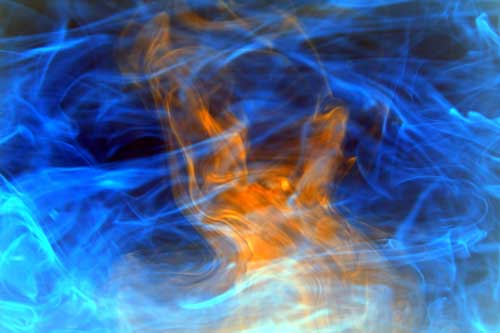
Creation of light and division of the waters below from waters above
lenticular image 120x80 cm
get sample animation

Creation of water plants
lenticular image 120x80 cm
(...) Some people consider precisely
abstract art to be realistic
as it reveals the structure
if not the appearance of reality.
abstract art to be realistic
as it reveals the structure
if not the appearance of reality.
Piet Mondrian
Photography as one of the disciplines of visual arts is considered to be one of the most objective representations of reality due to its mechanical origins. All aesthetic concepts of photography take this fact into account. Iconic nature of photography is its obvious feature while its foundation is the authenticity of reality seen by the camera lens. The photographic image gives evidence to the existence of reality and provides an inventory of such elements that replace real objects and phenomena by representing them as something similar. In this context the term "abstract photography" seems illogical or even erroneous. However, the history of photography contains many examples of works produced not only without the camera, just by employing physical and chemical processes used in photography, but also of photogeraphic images that are not representational or figurative and are not indexes of anything else. It should suffice here to name but a few pioneers of this tendency: Man Ray, Laszlo Moholy-Nagy, Stefan Themerson, Karol Hiller, and their followers: Stefan Wojnecki, Marek Piasecki, Bronisław Schlabs, Jerzy Wardak, Józef Robakowski and many other artists.
Abstraction in photography is by no means marginal, especially when by photography we mean the art of the image, when that image possesses autotelic value for us and when the image's relation to reality ceases to be based on any external criteria.
The copying of the world that surrounds us has actually never been the aim of photography or painting for that matter. The opinion attributed to Botticelli who spoke about the visual value of an image produced by means of throwing a paint-saturated sponge on the wall is just one piece of evidence to confirm this statement. Nevertheless, this does not mean that iconism has lost its former popularity among painters - especially the kind of iconism that for centuries was of criterial character. The correspondence of the image with reality, its verisimilitude or likeness were conceived as the equivalent of the Aristotelian notion of truth, whose realistic illusion overpowered even ancient birds that flew to peck at the grapes painted by Parrasios. Even in the second half of the 20th century iconism as a qualitative attribute of art was heralded by Claude Levi-Strauss in The Savage Mind along with the French author's concept of art as a reduced model of reality... In his opinion abstract images are not signs but rather self-sustained objects that cannot be said to have any relation with reality. This proposal seemingly stands in opposition to Piet Mondrian's opinion given in the motto to this text but the conflict is actually deceptive since it is the way in which an image functions that really determines its value.
A copy of the world, the image of the world... Does it depend on what we consider to be the nature or essence of the real world? The problem of realism versus abstraction ought to be seen as consequential to the intellectual activity of the viewer. If the viewer is aware of the limits of his visual and cognitive competence and open to the prospect of their expansion, and if he treats the visual message as a play of the presence of reality and of its absence, then, as Jacques Derrida puts it, he gives independence to the image on the level of both form and content - and this is not only true of the message (i.e. of the perceived image) but even more so the true of the subject who is "reading" it. What we call "real" is simply domesticated by culture in its social aspect and by the personal experience of each individual, while the image remains� merely an image.
In the 1930s of the 20th century Picasso claimed that "there is no abstract art" because "the idea of an object leaves an unerasable trace" even when the object itself cannot be recognized in the picture any more. According to the Master the differentiation into figurative and non figurative art does not make sense, as there can be no image without such figures as a human being, an object or a circle; later Picasso claimed that some of those figures come close to our experience and provide feelings for our emotional faculties to work on while others turn more to the intellect. Does that not mean that the category of realism is fluid? Why, yes. What is real is whatever has been recognized in the picture. Our visual experience and cultural competence in connection with the natural activity of our perception, during which the brain "creates" certain objects in order to make sense out of what the eyes are seeing, forces us to "look and understand" as a condition sine qua non in our conscious being in the surrounding reality. Therefore knowledge, experience and intellectual activity become the keys to recognizing, understanding and experiencing images - and expel their relations with reality to the margin.
Lenticular images by Tomasz Mażewski are realistic; they present the spontaneous permeation of molecules of one kind of substance into another during their direct contact caused by the kinetic energy of molecules... It is an image of the world untamed by our visual experience and that is why we superficially count it among abstract images in spite of the fact that they are real.
With the abovementioned "abstract" photographic experiments we should also mention the art of Fortunata Obrąpalska who took black-and-white pictures of one liquid dissolving in another and then turned the image 180 degrees vertically, producing "abstract" images, expressively poetic.
Tomasz Mażewski also uses effects of this kind, enhancing them with impressions of colour as well as - which is much more important - by extending the influence of his images in a "physical" interaction imposed on the viewer. Changing the point of observation with regard to the image by means of lenticular foil, the viewer gets his visual impression augmented by the appearance of the third dimension and of movement.
These works are the result of applying new technological means to the photographic ways of reproducing the real world. And on the level of representation they reveal poetic features of existence even in its most physical aspects.
Stefan Czyżewski
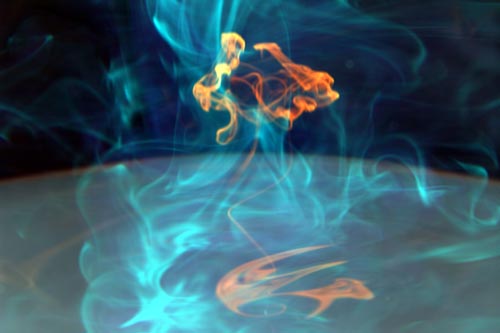
Creation of sea creatures and birds
lenticular image 120x80 cm
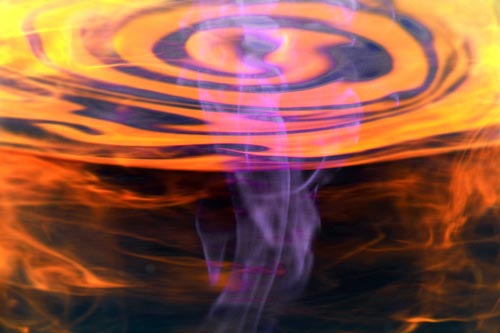
Creation of the sun and the stars
lenticular image 120x80 cm
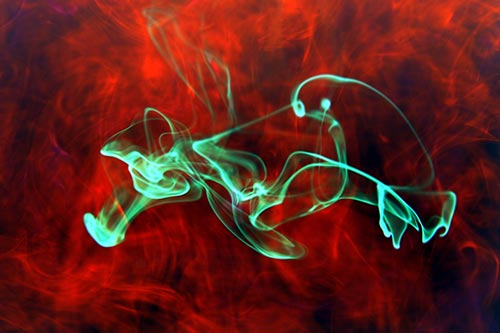
Creation of the animals
lenticular image 120x80 cm
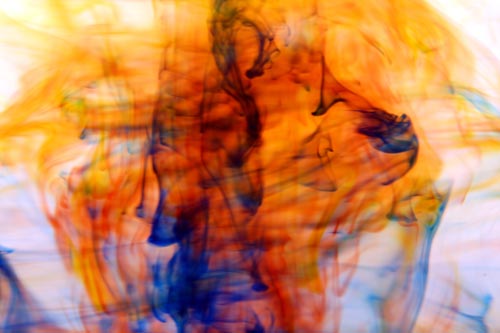
Creation of the human being
lenticular image 120x80 cm
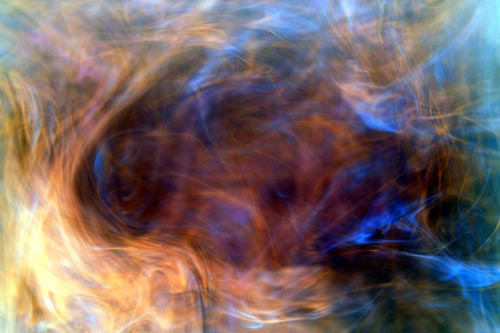
Rest
lenticular image 120x80 cm
Next exhibition
11-30 VI 2010
Copyright ©2010 Galeria FF ŁDK, Tomasz Mażewski, Stefan Czyżewski